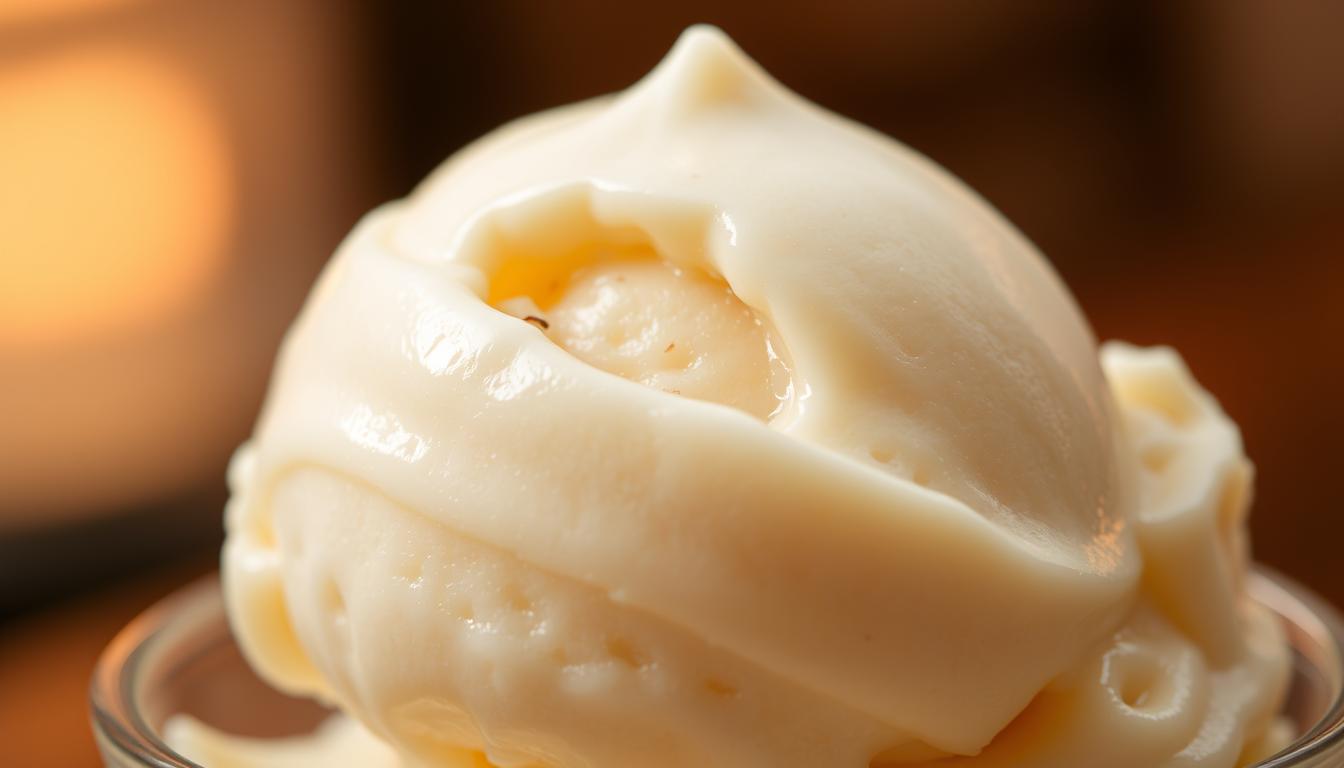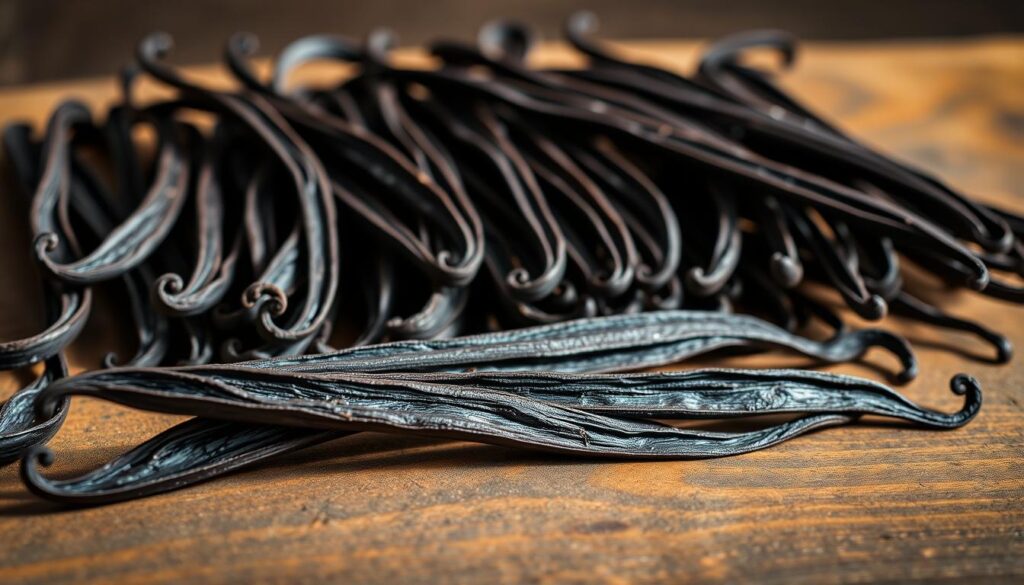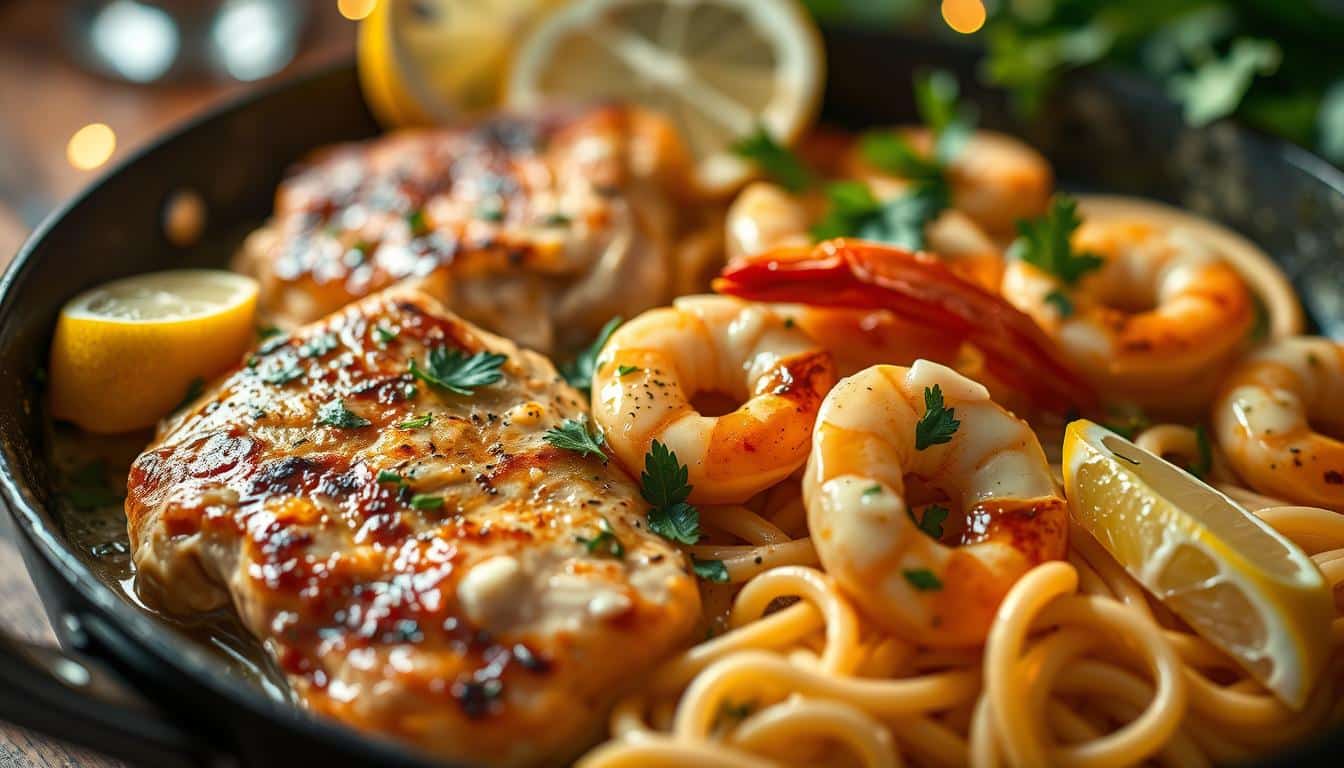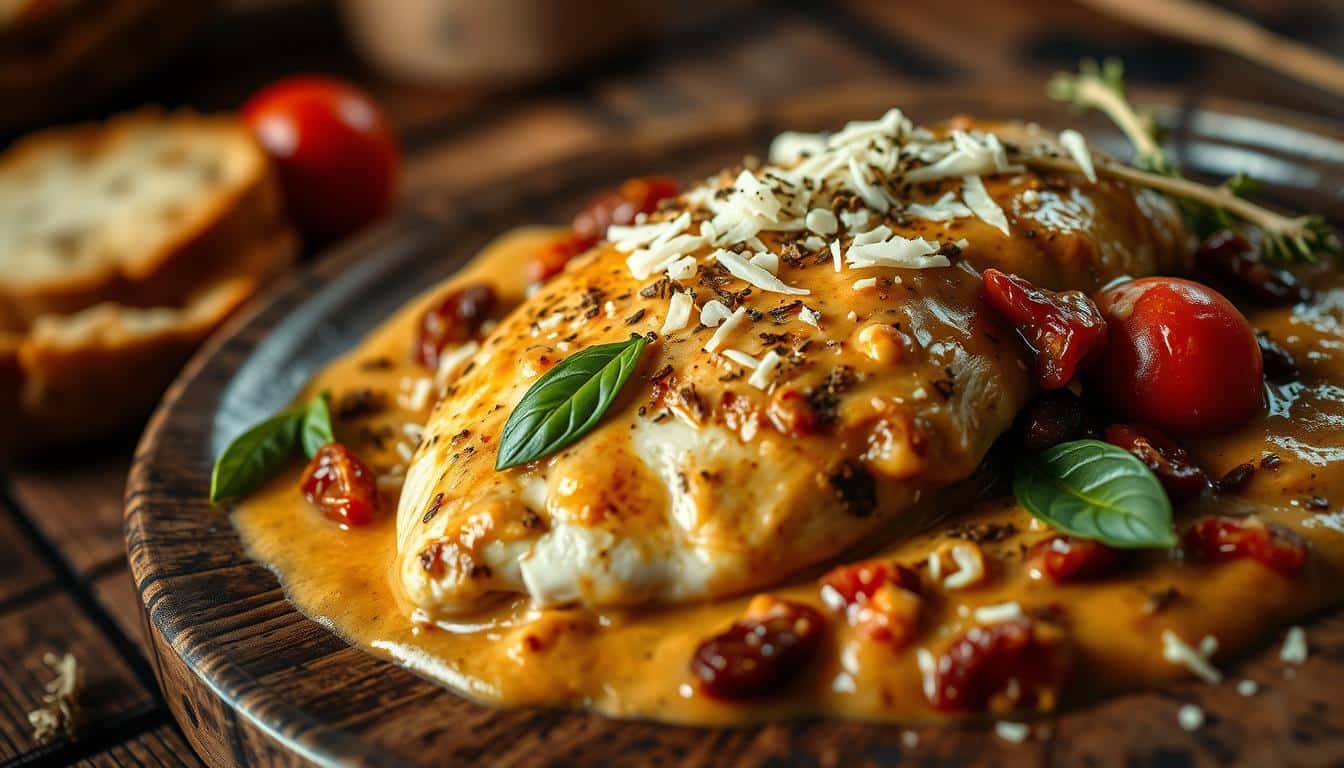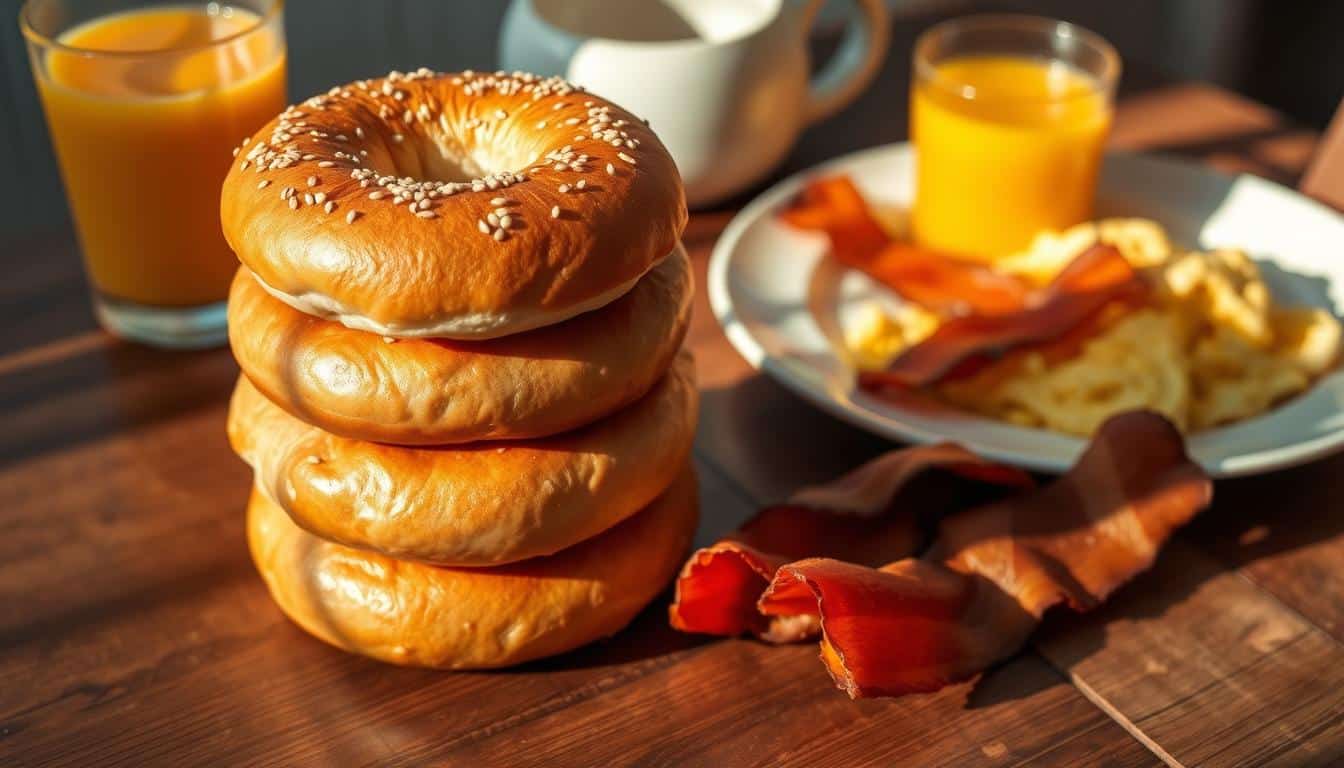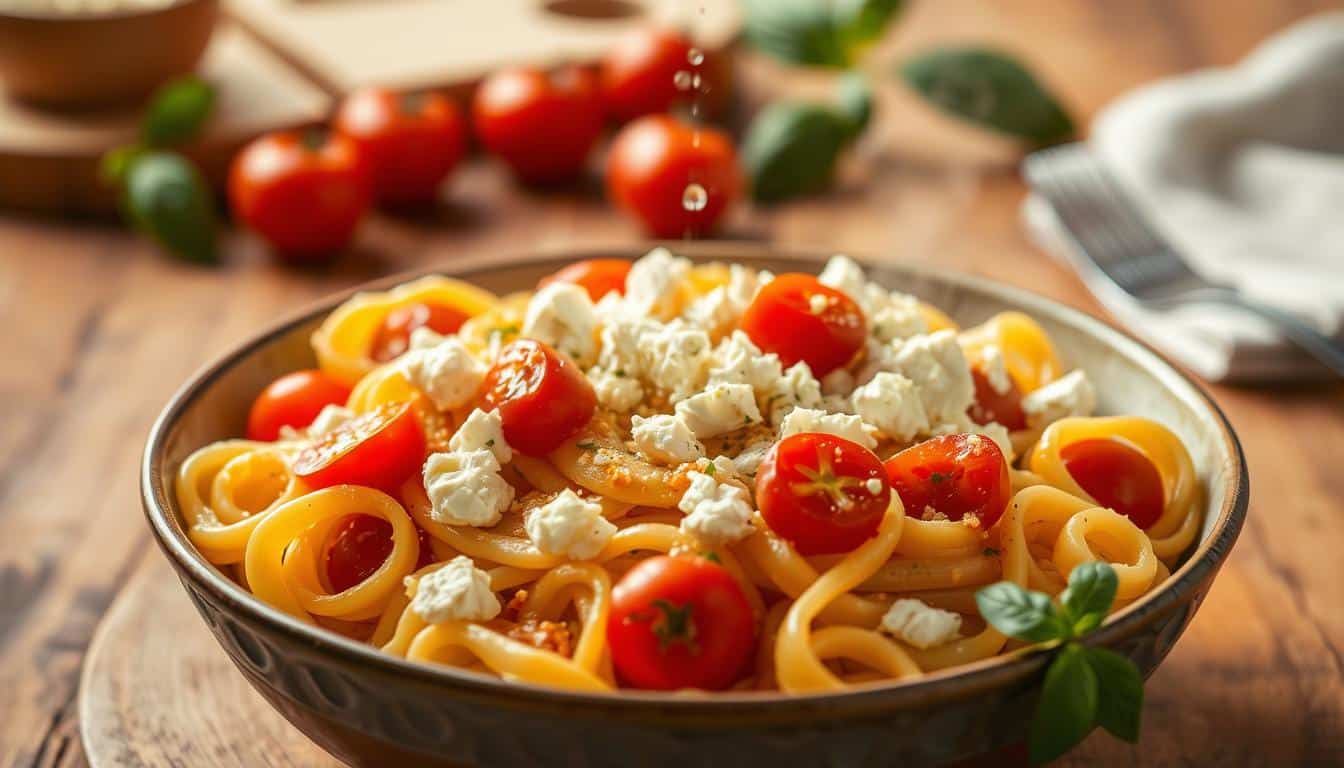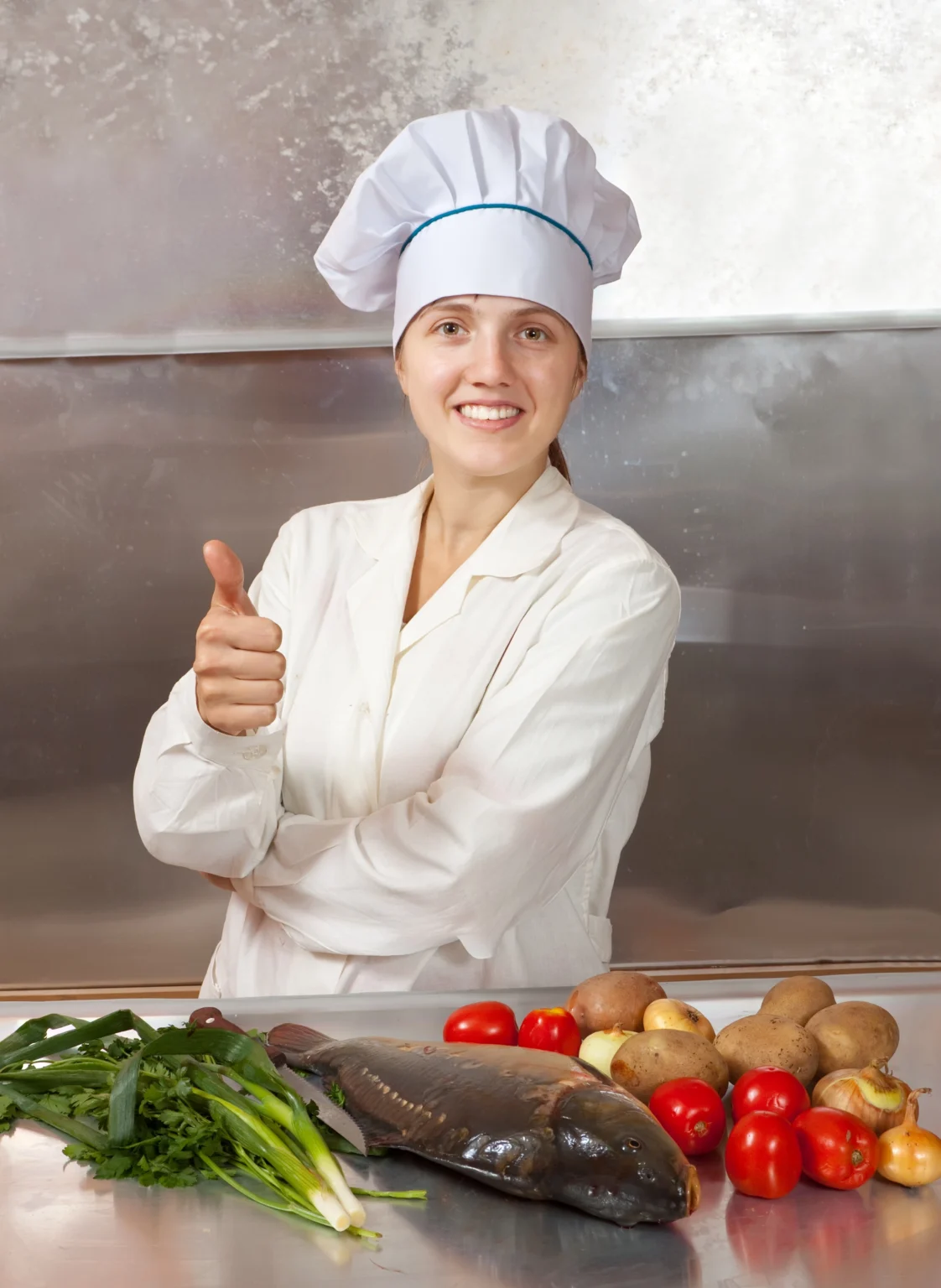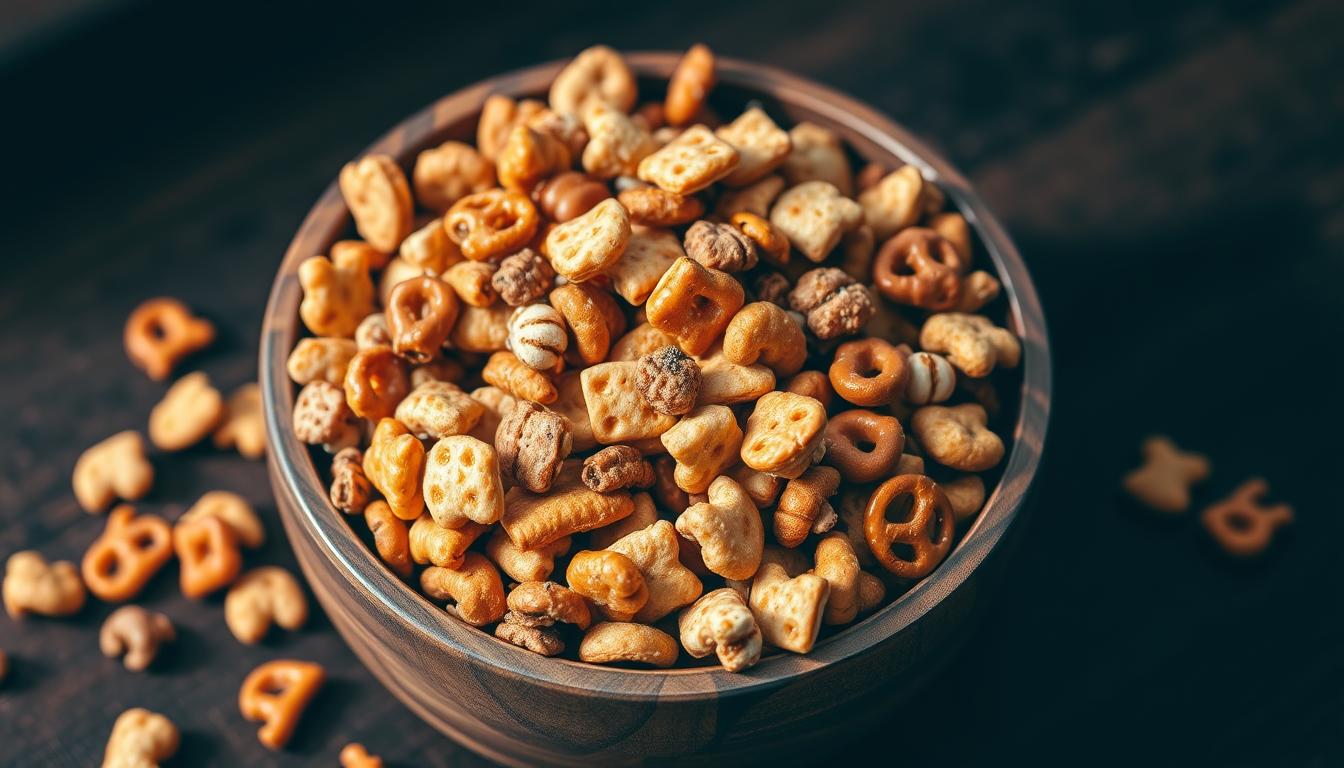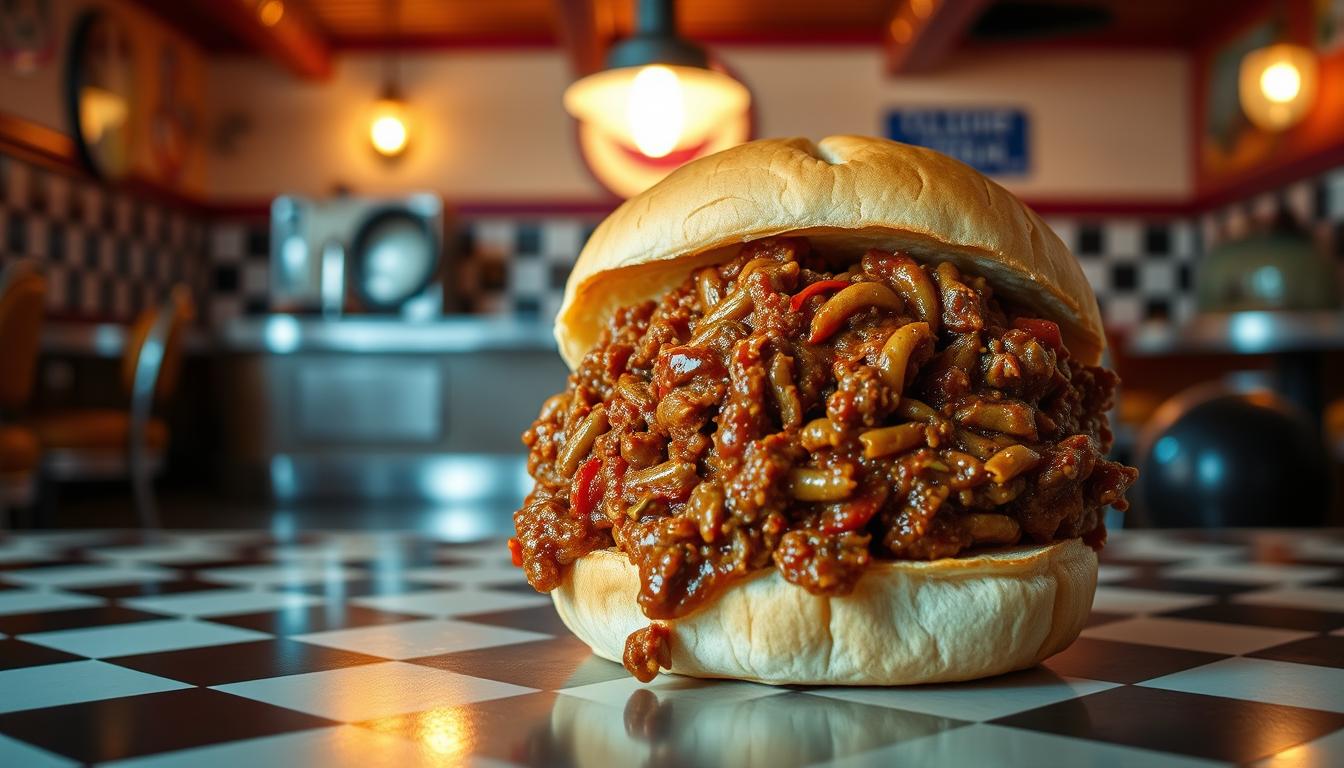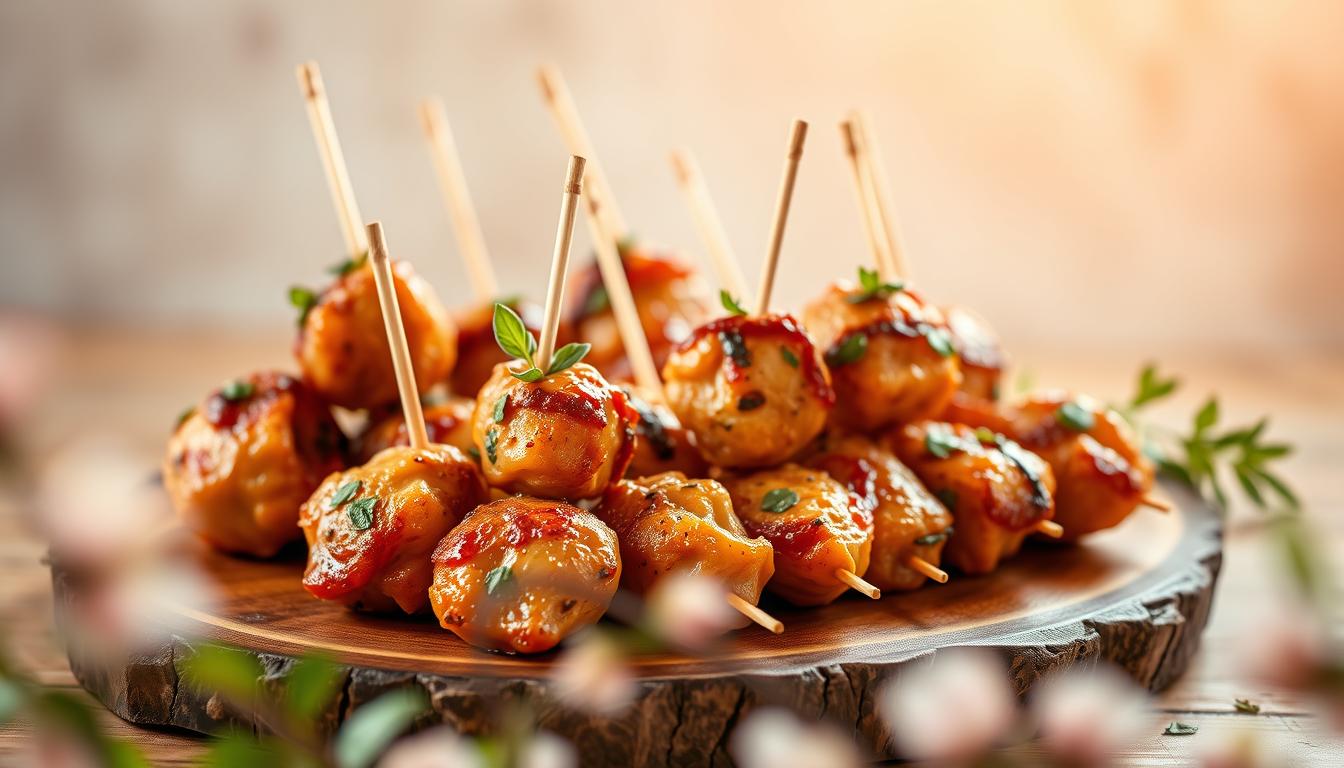Growing up in the Midwest, summer was all about finding the best vanilla frozen custard. That first taste was like a trip to dessert heaven. It was so creamy and smooth, it felt like velvet on my tongue.
Vanilla frozen custard is more than just a dessert. It’s a special treat that turns a simple homemade custard into something amazing. Unlike ice cream, it has a luxurious texture that makes it stand out.
So, what makes this dessert so special? It’s all about the ingredients and how they’re prepared. Each batch of vanilla frozen custard is a mix of cream, eggs, and pure vanilla. This mix turns simple ingredients into a culinary masterpiece.
Key Takeaways
- Vanilla frozen custard offers a uniquely smooth texture
- Egg yolks create its signature rich consistency
- Temperature and preparation are crucial to perfect custard
- Homemade custard allows for personalized flavor experiences
- Midwest regions are renowned for exceptional frozen custard
What Makes Vanilla Frozen Custard Different from Ice Cream
Explore the world of frozen treats and see why vanilla frozen custard is special. It’s different because of its ingredients, how it’s made, and its texture. These factors make it a unique and creamy delight.
The Unique Role of Egg Yolks in Custard Base
Egg yolks make custard special. Unlike ice cream, frozen custard must have at least 1.4% egg yolks. This gives it a smooth and luxurious feel.
These egg yolks mix ingredients together well. They create a velvety consistency that ice cream can’t match.
- Egg yolks provide extra richness
- Creates a denser, creamier base
- Enhances overall flavor profile
Understanding Overrun in Frozen Desserts
Overrun is the air added during freezing. Frozen custard has less air, about 20-30%. Ice cream has 100% air.
This means custard tastes more intense and feels denser. It’s a richer experience on your tongue.
Temperature and Serving Differences
Frozen custard is served warmer, around 10-15 degrees above ice cream. This makes it softer and more pillowy.
It melts in your mouth perfectly. This gives you a unique taste experience.
- Served at higher temperature
- Softer, more fluid consistency
- Immediate melt-in-your-mouth sensation
The History and Origins of Frozen Custard in America
Frozen custard has a rich and fascinating story in American dessert origins. It emerged as a unique culinary creation in the early 20th century. It quickly captured taste buds across the United States.
The roots of custard in the US go back to the 1933 Chicago World’s Fair. It was there that this delectable treat first gained widespread popularity.
The journey of frozen custard began with innovative food vendors. They perfected a unique churning process. This process, unlike traditional ice cream, used egg yolks and reduced air incorporation. It created an incredibly smooth texture.
- 1933: First major public introduction at Chicago World’s Fair
- 1940s: Rapid spread across Midwestern states
- 1950s: Emergence of dedicated frozen custard stands
Midwestern cities like Milwaukee became true epicenters of frozen custard culture. Families would gather at local stands. They enjoyed this rich and creamy dessert that became a beloved regional specialty.
The custard in the US quickly transformed from a novelty to a cultural phenomenon.
| Decade | Frozen Custard Milestone |
|---|---|
| 1930s | Initial commercial introduction |
| 1940s | Regional popularity in Midwest |
| 1950s | Nationwide recognition |
Today, frozen custard remains a cherished part of American culinary heritage. From family-owned shops to modern dessert chains, it continues to delight generations of dessert lovers across the country.
Essential Ingredients for Homemade Vanilla Frozen Custard
Making the perfect homemade frozen custard needs top-notch ingredients. It’s all about picking the right stuff. From the best vanilla beans to fresh dairy, each part is key to a great dessert.
Selecting the Right Vanilla Bean
Choosing the right vanilla bean is crucial for a rich flavor. Not all vanilla beans are the same. Here’s what to look for:
- Madagascar Bourbon vanilla beans are the best for a classic taste
- Go for plump, moist beans with a strong smell
- Choose beans that are soft and have a bit of shine
Fresh Dairy Ingredients Matter
The base of great homemade frozen custard is its dairy. Using fresh, quality ingredients makes a big difference in taste and texture.
| Dairy Component | Recommended Quality | Impact on Custard |
|---|---|---|
| Heavy Cream | Organic, Minimum 36% Fat | Provides rich, smooth texture |
| Whole Milk | Local, Grass-Fed | Enhances creamy consistency |
| Egg Yolks | Free-Range, Fresh | Creates luxurious mouthfeel |
Egg Quality and Safety Guidelines
When making homemade frozen custard, egg safety is a must. Use fresh, quality eggs and follow these tips:
- Buy eggs from trusted sources
- Look for eggs with clean, intact shells
- Use pasteurized eggs for raw recipes
- Keep eggs refrigerated properly
By focusing on these key ingredients and methods, you’ll make a frozen custard as good as store-bought. Your hard work will pay off with a creamy, tasty treat every time.
Step-by-Step Preparation Techniques
Mastering custard preparation is all about precision and care. It starts with knowing the basic techniques to turn simple ingredients into a luxurious treat. Making custard well means paying close attention to every detail and following a step-by-step guide.
First, gather these key ingredients for your custard:
- Heavy cream
- Whole milk
- Fresh egg yolks
- Granulated sugar
- Pure vanilla extract
The secret to a smooth custard is egg tempering. Slowly add hot milk to egg yolks while whisking. This step is crucial to avoid scrambled eggs and get a creamy texture.
Here are some tips for making perfect custard:
- Heat milk and cream until it’s steaming, not boiling
- Whisk egg yolks with sugar until they’re pale and thick
- Strain the custard base to remove any lumps
- Cool the mixture completely before freezing
- Freeze in a pre-chilled container
Temperature control is key in making custard. Use a digital thermometer to check your mixture reaches 170-175°F. This safely cooks the eggs and makes a stable base for your frozen dessert.
Best Equipment for Making Vanilla Frozen Custard
Making the perfect vanilla frozen custard needs the right tools. Whether you’re cooking at home or in a professional kitchen, the right frozen custard machines are key. They can greatly improve your final product.
Choosing the right equipment means knowing what your custard-making process needs. It’s important to control the temperature. This is what makes your custard smooth and creamy.
Commercial vs. Home Custard Machines
There are two main types of custard machines:
- Home Machines: Small and easy on the wallet
- Great for making small batches
- Usually holds 1-2 quarts
- A more affordable choice
- Commercial Machines: Top-notch equipment for pros
- Can make more at once
- Has better temperature control
- Guarantees consistent results
Essential Temperature Control Tools
When making frozen custard, precision is everything. Here are the must-have tools for temperature control:
- Digital instant-read thermometer
- Calibrated kitchen scale
- Programmable refrigeration units
Quality custard making equipment is an investment. It ensures your frozen custard is delicious and professional-grade. Remember, the right temperature is what makes great custard.
Common Mistakes to Avoid When Making Custard
Making perfect vanilla frozen custard can be hard. Many people make mistakes that ruin their dessert. Knowing these mistakes is key to making great frozen custard.
Fixing frozen custard starts with knowing common texture issues. Keeping the right temperature is key to avoiding disasters. When making your custard base, avoid these mistakes:
- Overheating the egg mixture – This leads to scrambled eggs instead of a smooth custard base
- Failing to temper eggs correctly, which causes instant curdling
- Using incorrect dairy fat percentages that impact texture
- Overlooking the importance of constant stirring
Texture problems often come from bad technique. Your custard base needs gentle heat and constant attention. Use a digital thermometer to keep temperatures between 170-180°F. This ensures a smooth consistency without curdling.
Freezing also has its challenges. Quick freezing can create ice crystals, ruining the creamy texture. Use a good ice cream maker and churn long enough to get that smooth texture.
- Chill your base thoroughly before churning
- Use fresh, high-quality ingredients
- Maintain consistent freezer temperatures
By knowing these common mistakes, you can make top-notch vanilla frozen custard at home.
Serving and Storage Tips for Perfect Results
Making delicious frozen custard is an art. But keeping it creamy needs careful serving and storage. The right steps help keep your dessert perfect from start to finish.
Optimal Temperature Guidelines
The right serving temperature is key for enjoying custard. Serve it at 18-20 degrees Fahrenheit for the best texture. This temperature keeps it smooth and easy to scoop.
Container Selection for Frozen Custard Storage
Storing frozen custard right is crucial. Look for an airtight container with these features:
- Shallow, wide-mouth design for easy scooping
- Freezer-safe material like glass or BPA-free plastic
- Tight-sealing lid to minimize air exposure
Preventing Ice Crystal Formation
Ice crystals can ruin your custard’s smoothness. To avoid them, follow these steps:
- Press plastic wrap directly onto the custard surface before sealing
- Store at a consistent freezer temperature of 0°F or lower
- Consume within 7-10 days for optimal flavor and texture
| Storage Method | Maximum Storage Time | Quality Preservation |
|---|---|---|
| Airtight Container | 7-10 days | Excellent |
| Wrapped Tightly | 14 days | Good |
| Unsealed | 3-4 days | Poor |
By using these storage tips, your frozen custard stays delicious. Temperature control and the right container are essential for that creamy texture.
Creative Toppings and Pairings
Take your vanilla frozen custard to the next level with creative toppings. These toppings can turn a simple dessert into a gourmet masterpiece. It’s perfect for both casual dessert fans and serious food lovers.
Try these exciting custard flavor pairings for unforgettable tastes:
- Caramel and Sea Salt: Mix artisan caramel with flaky sea salt for a sweet-savory mix
- Fresh Seasonal Berries: Soak strawberries or raspberries for a deep fruit flavor
- Toasted Nuts: Add candied pecans or almonds for crunch and flavor
- Chocolate Variations: Use dark chocolate shavings or warm ganache
Looking for something unique? Try these gourmet custard desserts:
- Lavender honey drizzle
- Crushed pistachio and rose water
- Bourbon-infused caramel
- Matcha powder sprinkle
Your frozen custard is a blank canvas for creativity. Mix textures, temperatures, and flavors to find your favorite mix.
Conclusion
Learning to make homemade vanilla custard is more than a skill. It’s an art that connects you to a rich American dessert tradition. It starts with understanding the balance of ingredients, techniques, and passion. This turns simple parts into a smooth frozen treat.
Every step you’ve learned, from picking the best vanilla beans to controlling temperatures, gets you closer to making amazing frozen custard. Making vanilla frozen custard is about being precise, creative, and enjoying the process. It’s also about sharing a special dessert with those you love.
Now, you can try new things and make custard your own. You can stick to the classic vanilla or try new flavors. The skills you’ve learned will help you in your dessert-making journey.
Start making custard with confidence. Your kitchen is your canvas, and every batch of custard is a chance to impress and create special moments. This timeless frozen treat brings joy and wonder to your table.
